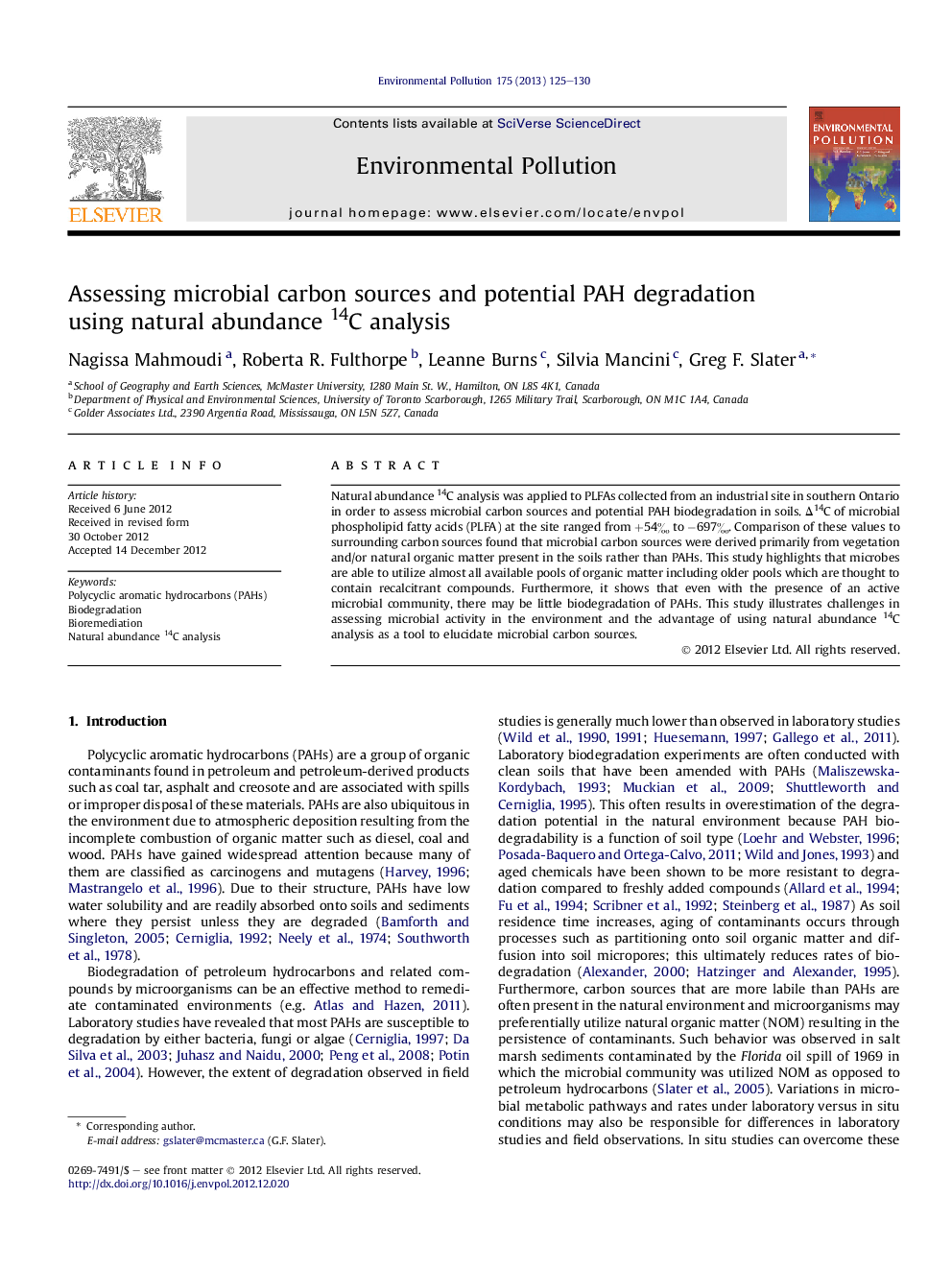| Article ID | Journal | Published Year | Pages | File Type |
|---|---|---|---|---|
| 4424593 | Environmental Pollution | 2013 | 6 Pages |
Natural abundance 14C analysis was applied to PLFAs collected from an industrial site in southern Ontario in order to assess microbial carbon sources and potential PAH biodegradation in soils. Δ14C of microbial phospholipid fatty acids (PLFA) at the site ranged from +54‰ to −697‰. Comparison of these values to surrounding carbon sources found that microbial carbon sources were derived primarily from vegetation and/or natural organic matter present in the soils rather than PAHs. This study highlights that microbes are able to utilize almost all available pools of organic matter including older pools which are thought to contain recalcitrant compounds. Furthermore, it shows that even with the presence of an active microbial community, there may be little biodegradation of PAHs. This study illustrates challenges in assessing microbial activity in the environment and the advantage of using natural abundance 14C analysis as a tool to elucidate microbial carbon sources.
► Microbial carbon sources and PAH biodegradation were assessed in contaminated soils. ► Natural abundance 14C analysis was applied to microbial phospholipid fatty acids. ► Microbial carbon sources were derived primarily from natural organic matter. ► PAHs represented a minor source of microbial carbon.
